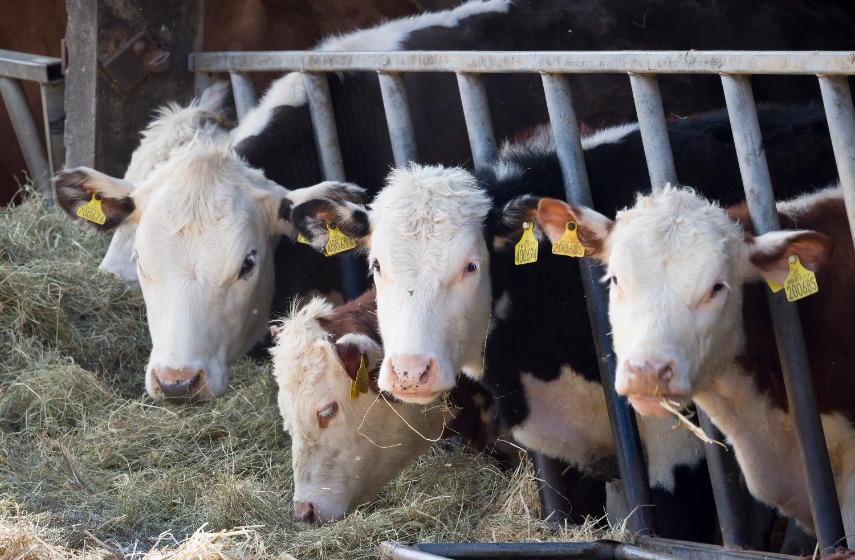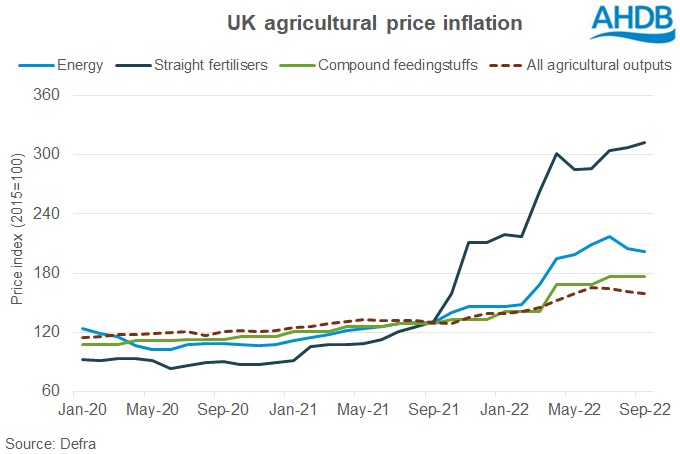
Margins for livestock farmers continue to be pressured as prices for key inputs remain at high levels, according to new AHDB analysis.
While the rate of input price inflation has eased slightly since August for fuel and feed according to the latest Agricultural Price Index (API) data, there have been further increases in prices paid for fertilisers.
Meanwhile, the average price received for all agricultural outputs has decreased since the summer, although AHDB says there is likely to be variations in output price trends across the various sectors.
Fertiliser prices have seen the steepest increases. AHDB's analysis shows that prices paid in September were up 9% in the last quarter (Sep v Jun), and 139% higher than a year earlier.
Freya Shuttleworth, AHDB analyst said: "The volatility on natural gas markets, combined with rising gas prices, has led to some fertiliser manufactures to halt or reduce production, resulting in the UK becoming more dependent on imports, further adding to the costs."
Energy price inflation peaked in July ahead of the Ofgem price cap announcement in August.

Prices have eased slightly since then, with the price paid in September sitting 4% below the end of the last quarter (June) but 55% above those from a year ago.
Ms Shuttleworth said it was likely that some of this easing was due to lower demand during the summer months along with government announcement of Energy Price Guarantee at the start of September.
"However, with a higher price cap taking effect from 1 October, and demand increasing over the winter, price inflation is likely to pick up again as the year ends," she said.
Price inflation for compound feed has been less dramatic but still significant, up 37% year on year, the analysis says.
With the UK having recorded the tenth driest summer on record, grass growth between June and the beginning of September was limited.
"This will have limited forage availability for the winter for many, leading to increased use of compounds over winter, further driving up production costs," Ms Shuttleworth said.
